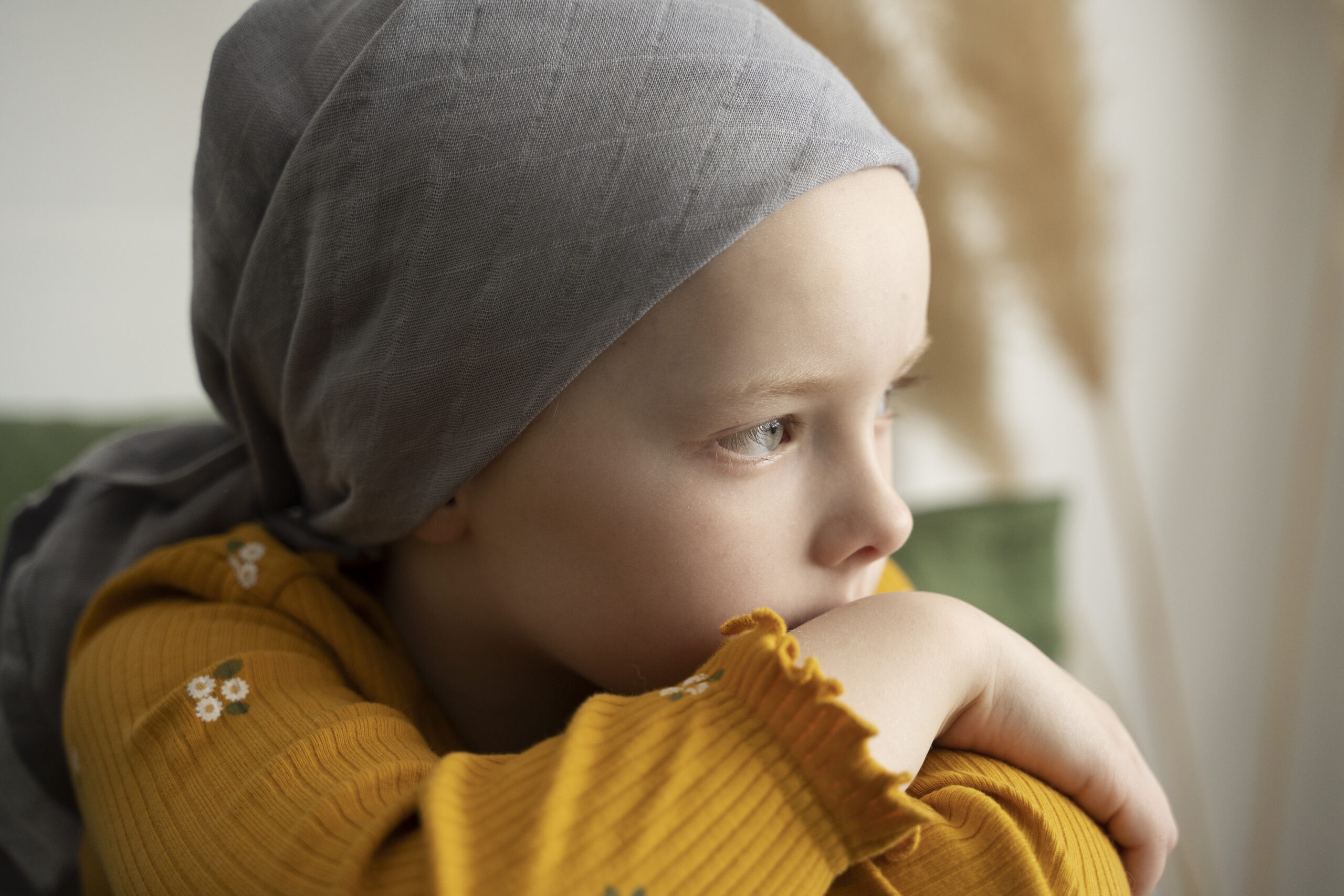
Seeing small children filled with the joy of new dreams, desires and future prospects for them engulfs one’s soul. And it becomes the target of all parents to help their children achieve their goals and be happy forever. However, breaking such a true picture, diseases like CANCER leave children and their concerned parents helpless and distressed.
Childhood cancer or pediatric cancers affect more than 175K children per year worldwide. With timely diagnosis and proper treatment, in most of these children, this dreaded disease can be cured forever. Awareness plays a vital role in getting the best care and treatment for the afflicted child.
To begin with says our one of the best Pediatric oncologists in India, one should know that there are several types of childhood cancers that arise from different parts of the body like blood, brain, bones, muscles, kidney, liver, etc. In this article, Dr. Vikas Dua, best Pediatric Hemato Oncologist in Delhi will make you aware of 5 common types of childhood cancer you need to know about.
Leukemia
Leukemia means blood cancer which is the most common type of childhood cancer (about 30% of the total cancer burden in children). Cancer cells originate in the bone marrow (the place where normal blood production occurs) and spread to include the liver, spleen, and lymph nodes. These abnormal cells also suppress the production of normal blood cells. All these include fever, low hemoglobin (the child looks pale and feels tired), weight loss, body aches, bleeding from various sites, easy bruising, or small pinpoint bleeding spots (petechiae) on the body. Swelling in the neck, armpits (includes lymph nodes).
The child is at risk of getting frequent or severe infections. The different types of leukemia seen in children include acute lymphoblastic leukemia, acute myeloid leukemia, chronic myeloid leukemia, and less commonly juvenile myelomonocytic leukemia. These cancers are highly amenable to treatment and offer a good chance of cure if diagnosed early and properly managed by one of the best Pediatric Cancer doctors. Some leukemia is treatable only with chemotherapy/radiotherapy and some may need Bone marrow transplantation.
Brain and Spinal Cord Tumors
These cancers comprise the second most common group (about 20%) of childhood malignancies. Depending on the location, size, and aggressiveness of the tumor, the child may have early morning headaches, vomiting, double vision, loss of consciousness with or without abnormal movements. Weakness of one or more limbs, unsteady gait, difficulty walking, or bladder bowel symptoms (involuntary passage or difficulty passing urine or stool) may occur.
Lymphoma
In about 10-15% of childhood cancers, lymphoma involves lymphatic tissue within the body, including the lymph nodes, tonsils, and spleen. Most children have abdominal distension or obstruction, chest mass (difficulty breathing, flushed face) with persistent or increasing swelling in the neck, armpit or groin area. They can also arise in the brain or bone. There are two general categories: Hodgkin lymphoma and non-Hodgkin lymphoma, based on the cell of origin. Both of these require a different set of chemotherapy drugs and may require a schedule with or without radiation therapy depending on the type of lymphoma and the extent of the disease. Some lymphomas may need Bone marrow transplantation
Neuroblastoma
A disease particularly common to infants and young children, neuroblastoma is the most common extra-cranial solid tumor of childhood. It arises from the adrenal gland (located above the kidneys) or from a nerve (sympathetic) chain anywhere in the body. The child may have progressive abdominal distension, massive swelling of the abdomen, neck, back (usually seen by the mother or caregiver during bathing or changing clothes).
If the disease is widespread, there may be protrusion of the eyes, painless blue lumps under the skin, difficulty in breathing. Some children may have abnormal movement of the eyes and limbs with difficulty with balance (opsoclonus myoclonus ataxia syndrome) or intractable diarrhea. Depends on the modalities of treatment (surgery, chemotherapy, radiation therapy, and sometimes bone marrow transplantation), the extent of the disease, and various other characteristics.
Wilms’ Tumor
The most common tumor of the kidney in children accounts for about 6% of all childhood tumors. This disease is most often noticed when an abdominal mass is observed while nursing a baby or an abdominal ultrasound is performed for some other purpose. There may be blood in the urine, abdominal pain, or high blood pressure. Treatment includes chemotherapy, surgery, and radiotherapy (in select cases).
Cancer is an unfortunate disease. But childhood cancer is curable. Early diagnosis and prompt proper treatment can give the child the best chance of recovery under the care of a good pediatric hemato oncologist and BMT expert in Delhi.

